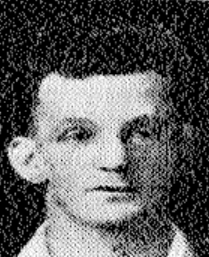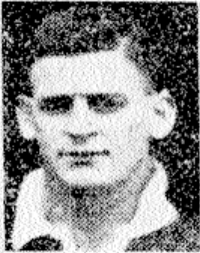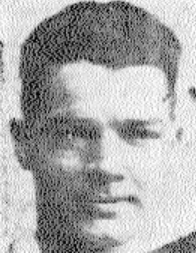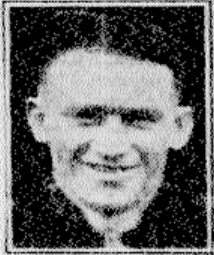The Auckland rugby league team is the team which traditionally represents all of the clubs which play in the Auckland Rugby League competition. As well as a senior men's team there are also Auckland representative teams throughout the various age groups such as under 15s, under 17s, under 19s and under 21s.

The 1928 Auckland Rugby League season was its 19th. Devonport United won the Senior A Championship for the first time under the Devonport United name, though they had won it twice before as North Shore Albions, before the North Shore merger with Sunnyside. Marist Old Boys won the Roope Rooster trophy for the first time. This was their second major trophy after winning the championship in 1924. They also went on to defeat Devonport to win the Stormont Shield.

Lou Hutt was a representative rugby league player who played in the Waikato, Auckland, and in England. He played for New Zealand in 8 tests from 1928 to 1935 and was Kiwi #193.

William Frederick Peckham, better known as Tim Peckham was a New Zealand international rugby league player. He played 2 tests for New Zealand in 1928 becoming the 198th Kiwi in the process. He also played representative rugby league in the 1920s for Auckland, the sub unions of Lower Waikato, Hamilton, and South Auckland, and in 1926 and 1927 for the North Island. He played club rugby league for City Rovers, Huntly United, Athletic (Hamilton) Ponsonby United, and Richmond Rovers.
Albert Laing was a rugby league player who represented New Zealand in 1932 against England becoming Kiwi #217. He played club rugby league for Devonport United from 1931 to 1934 and made 4 appearances for Auckland, and 1 for the North Island.

Allan (Lar) Wilfred Seagar was a rugby league player who represented New Zealand in 1930, thus becoming New Zealand's 212th player. He also played for Auckland in 13 matches, and played from 1923 to 1941 for Devonport United, playing 159 matches. His brother George Seagar also represented New Zealand at rugby league; while his son Allan Herbert Seagar was a New Zealand champion swimmer, representing New Zealand at the 1962 and 1966 Commonwealth Games.
Wilfred Thomson Hassan was a rugby league footballer who represented New Zealand in 1932 in a test match against England thus becoming Kiwi #221. He was also a champion diver and was Auckland diving champion on several occasions and New Zealand champion in 1934 and 1935.
Raymond Victor Lawless was a rugby league player who represented New Zealand in 2 tests in 1932 and 1 test in 1935 against England and Australia respectively. In the process he became the 222nd New Zealand representative.
Gordon Campbell was a rugby league player who represented New Zealand in 2 tests in 1932 against England. Campbell played in the position of hooker. In the process he became the 223rd player to represent New Zealand.
Norm Campbell was a rugby league player who represented New Zealand in one test match against England in 1932 at fullback. In the process he became the 224th player to represent New Zealand. He also played rugby league for Auckland, Marist Old Boys, Otahuhu Rovers, and Papakura as well as the Otahuhu RFC Rugby Football Club.
Jim Laird was a rugby league player who represented New Zealand in 4 test matches in the second row and at hooker. He became the 226th player to represent New Zealand. He also played club rugby league for Ngaruawahia (1930–32), and Marist Old Boys (1932-35). He also played for Waikato representative teams (1930–32), and Auckland (1933-35).

Alan Clarke was a rugby league player who represented New Zealand in one test match against England in 1932 at lock. In the process he became the 227th player to represent New Zealand. He also played rugby league for the North Island and Auckland representative sides as well as the Newton Rangers, and Marist Old Boys clubs.
Roy Powell was a rugby league player who represented New Zealand in four test matches in 1935 and 1936 against Australia (2), and England (2) at halfback. In the process he became the 230th player to represent New Zealand. He also played rugby league for the North Island and Auckland representative sides as well as spending 16 years playing for Richmond Rovers including 8 in the senior side.
Ted Mincham was a rugby league player who represented New Zealand in three test matches in 1935 and 1936, twice against Australia and once against England. In the process he became the 229th player to represent New Zealand. He also played rugby league for the Auckland and North Island representative sides. Mincham played rugby league for the Richmond Rovers for many years and Mount Albert United for one season in Auckland, as well as the Celtic rugby league club in Wellington. He played one season for the Poneke rugby union club in Wellington as well. His father Bill Mincham was a senior league player in Auckland in its formative years who also represented Auckland and later became a representative referee and high-ranking official in the game. Ted's son, Robert Mincham, represented Auckland and New Zealand in the 1960s.

Clifford Allan Martin Satherley was a rugby league player who represented New Zealand in three test matches against Australia in 1935. In the process he became the 232nd player to represent New Zealand. Satherley also played for the North Island representative side along with Auckland. He played his club rugby league for Richmond Rovers and Mount Albert United. He also played representative rugby union for Auckland, Hawke's Bay, Bay of Plenty, and Waikato. His rugby union clubs were Manukau Rovers, Ponsonby, Marist Brothers Old Boys, Papamoa (BOP), Frankton Railway (Hamilton), and Technical Old Boys (Hamilton). He also played representative matches for the Te Puke and Hamilton sub-union representative sides.

Roy Arthur Hardgrave was a rugby league player. He represented New Zealand rugby league team in 3 tests in 1928. In the process he became the 189th player to represent New Zealand. Hardgrave also played for Newton Rangers, St Helens, Mount Albert United, York, and Toulouse rugby league clubs, along with the North Island, and Auckland representative sides. His father Arthur Hardgrave also represented New Zealand from 1912 to 1914.

Leonard Joseph Scott was a rugby league player. He represented the New Zealand rugby league team in 5 tests between 1928 and 1936, becoming the 191st player to represent New Zealand. Scott also played for the North Shore Albions club based in Devonport on Auckland's North Shore. Scott also played representative matches for Auckland, Auckland Colts, Auckland Province, New Zealand trial sides, a New Zealand XIII, and the North Island. He is the cousin of New Zealand rugby league player and New Zealand test cricketer, Verdun Scott and the two played together at North Shore later in Len's career.
Alfred Derwent Mitchell was a rugby league player. He represented the New Zealand rugby league team in 1 test against Australia in 1935. In the process he became the 238th player to represent New Zealand. Mitchell also played one match for Auckland Province in 1935. He played for the Richmond Rovers club in the Auckland Rugby League competition from 1933 to 1936. Mitchell enlisted in the New Zealand military and fought in World War 2.
James Lawrence O'Brien was a New Zealand rugby league player. He represented the New Zealand rugby league team in 1 match in 1925 against Queensland. In the process he became the 182nd player to represent New Zealand. He also represented Auckland 20 times from 1922 to 1927, and the North Island side in 1927. He played his club rugby league in Auckland for the North Shore Albions from 1921 to 1928, captaining them at times later in his career. He played for the Maritime club in 1920 and 1921 in his early years after returning from World War 1.

Claude List, born Victor Claude Wilschefski, was a rugby league player who represented New Zealand in the 1920s and 1930s. He represented New Zealand in one test match against England in 1928 and three more tests against England in 1932. In the process he became the 190th player to represent New Zealand. He also represented Auckland 24 times from 1925 to 1933, and the North Island side three times from 1927 to 1932. He played his club rugby league in Auckland for the Kingsland Rovers/Athletics club from 1925 to 1930, Marist Old Boys from 1931 to 1934, and then Mount Albert United from 1934 to 1941.
















